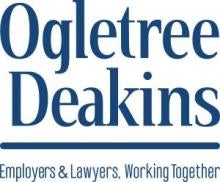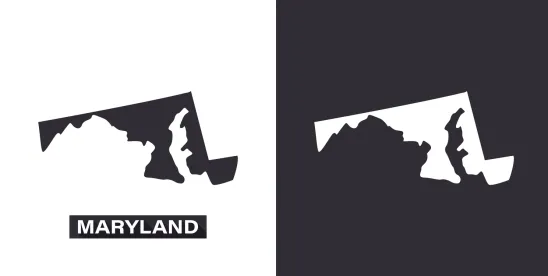Maryland employers are facing the first summer under a heat-related illness prevention standard issued by Maryland Occupational Safety and Health (MOSH). MOSH joins several other Democratic-led Occupational Safety and Health Administration (OSHA) state-plan states, such as California, Nevada, Oregon, and Washington, that have promulgated similar standards in recent years.
Quick Hits
- Maryland employers must comply with Maryland Occupational Safety and Health’s (MOSH) new heat-related illness prevention standard.
- The MOSH standard has been criticized for its vagueness and the burden it places on employers, leading to potential confusion and inconsistent enforcement.
- The Supreme Court’s decision in Loper Bright Enterprises v. Raimondo may limit MOSH’s ability to enforce its interpretation of the new standard, potentially leading to legal challenges.
The MOSH standard applies to all employers whose employees are exposed to an indoor or outdoor heat index of 80°F for more than fifteen minutes in an hour. At a heat index of 90°F or more, high-heat procedures apply. Maryland employers must:
- monitor the heat index throughout the work shift;
- develop and maintain a written heat-related illness prevention and management plan, made available to their employees and MOSH, that includes an extensive list of required elements, including the importance and availability of rest and drinking water, alternative cooling and control measures, symptoms of heat-related illness and how to respond, acclimatization, high-heat procedures, emergency response, and training;
- acclimatize newly hired employees and those returning to the workplace after an absence of seven or more days;
- provide adequate and accessible shade, or alternative cooling and control measures;
- provide cool and potable drinking water throughout the workday (at least thirty-two ounces per hour per employee); and
- provide training regarding heat-related illness prevention at least annually and “[i]mmediately following any incident at the worksite involving a suspected or confirmed case of heat-related illness.” The training must cover a list of specific topics, including environmental and personal factors affecting heat-related illness, acclimatization, the importance of water and rest breaks, signs and symptoms of heat-related illness, responding to heat-related illness, and how the employer will comply. Employers must retain training records for one year following the training date.
The MOSH standard is among the most onerous for employers and has been criticized for the vagueness of its acclimatization, monitoring, and training requirements. While MOSH claims the standard is intended to provide the flexibility to implement a program that considers the unique conditions present at each worksite, the standard’s breadth and ambiguity have caused confusion among employers and set the stage for inconsistent enforcement and litigation.
MOSH promised to provide guidance. It initially issued “Key Requirements” and a “Summary of Key Maryland Requirements fact sheet,” both of which simply reiterate the vague language in the standard. More recently, however, MOSH published an optional model program, itemizing specific and detailed actions that the agency stated employers should consider in developing their plan. Additionally, MOSH conducted a webinar to discuss compliance with the standard, and has now made the recording available on its website. In the webinar, MOSH offered some practical tips beyond the written guidance, including:
- Employers may use the wet bulb globe temperature (WBGT) method to monitor the heat index, even though it is not specifically listed as an option in the standard.
- The acclimatization schedule is specific to the individual employee—it can be less or more than the general timelines set forth in the standard.
- Employers that use their own health care professional (HCP) for pre-employment physicals can direct the HCP to ask the new employee about chronic conditions or medications that pose additional risks for heat-related illness. Although the HCP should not share that specific information with the employer, the HCP can alert the employer that the employee may be more prone to heat-related illness.
- Employers may not ask employees directly about their medical conditions or medications in advance of heat-related illness incidents. Employees should be trained that if they have such conditions, they must be more mindful of heat stress.
- The definition of “alternative cooling and control measures” includes a variety of protective measures, such as misting equipment and cooling devices, that can alter the employer’s obligation to develop acclimatization procedures and mandatory breaks in accordance with the language in the standard.
- The mandatory break periods do not necessarily require cessation of all work but instead can include light duty, paperwork, and similar activities.
- Nonworking rest periods of under twenty minutes must be paid in compliance with the Fair Labor Standards Act. Longer nonworking breaks can be unpaid.
- Employers must assume that day laborers and temporary employees are not acclimatized.
While the information MOSH provided in the webinar is helpful, additional written compliance guidance would be more helpful to employers developing plans. Given the ambiguous provisions in the MOSH standard, “Monday-morning quarterbacking” may be inevitable, with MOSH taking the position that the employer must be out of compliance if an employee suffers a significant heat-related illness. That position ignores the fact that heat-related illnesses often involve conditions outside of the employer’s control, such as illness, physical fitness, personal medical conditions, and age.
From a legal standpoint, MOSH’s ability to enforce its ad hoc interpretation of the standard’s provisions may be limited. In Loper Bright Enterprises v. Raimondo, the Supreme Court of the United States eliminated deference to an agency’s interpretation of its own statute. The holding will limit the ability of federal agencies to argue successfully that a court must defer to their interpretation of a standard or regulation. The effect of the Loper Bright holding on state regulatory provisions remains to be seen, but it could limit MOSH’s ability to impose its own interpretation of vague provisions on employers, particularly in the absence of written compliance guidance.






 />i
/>i

